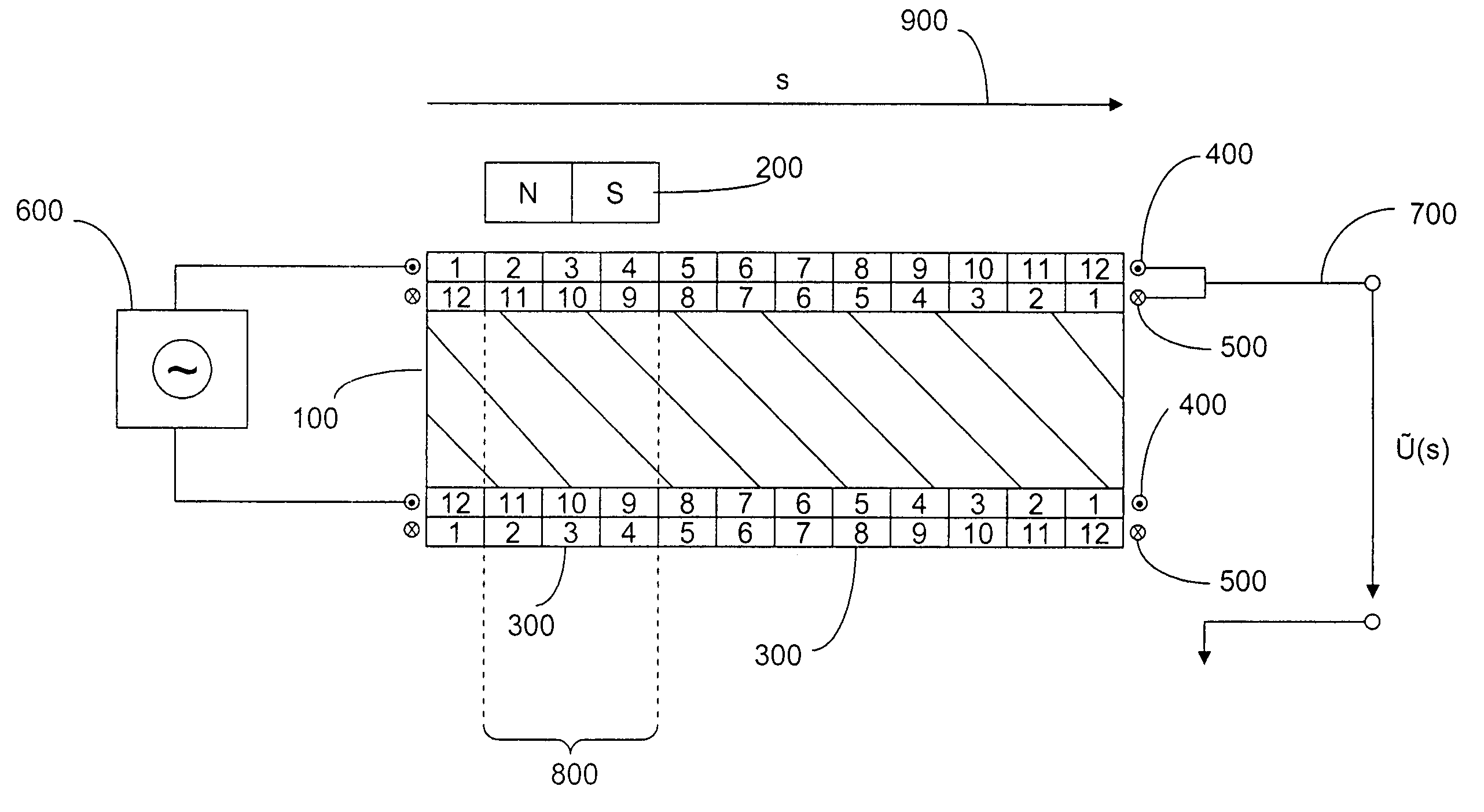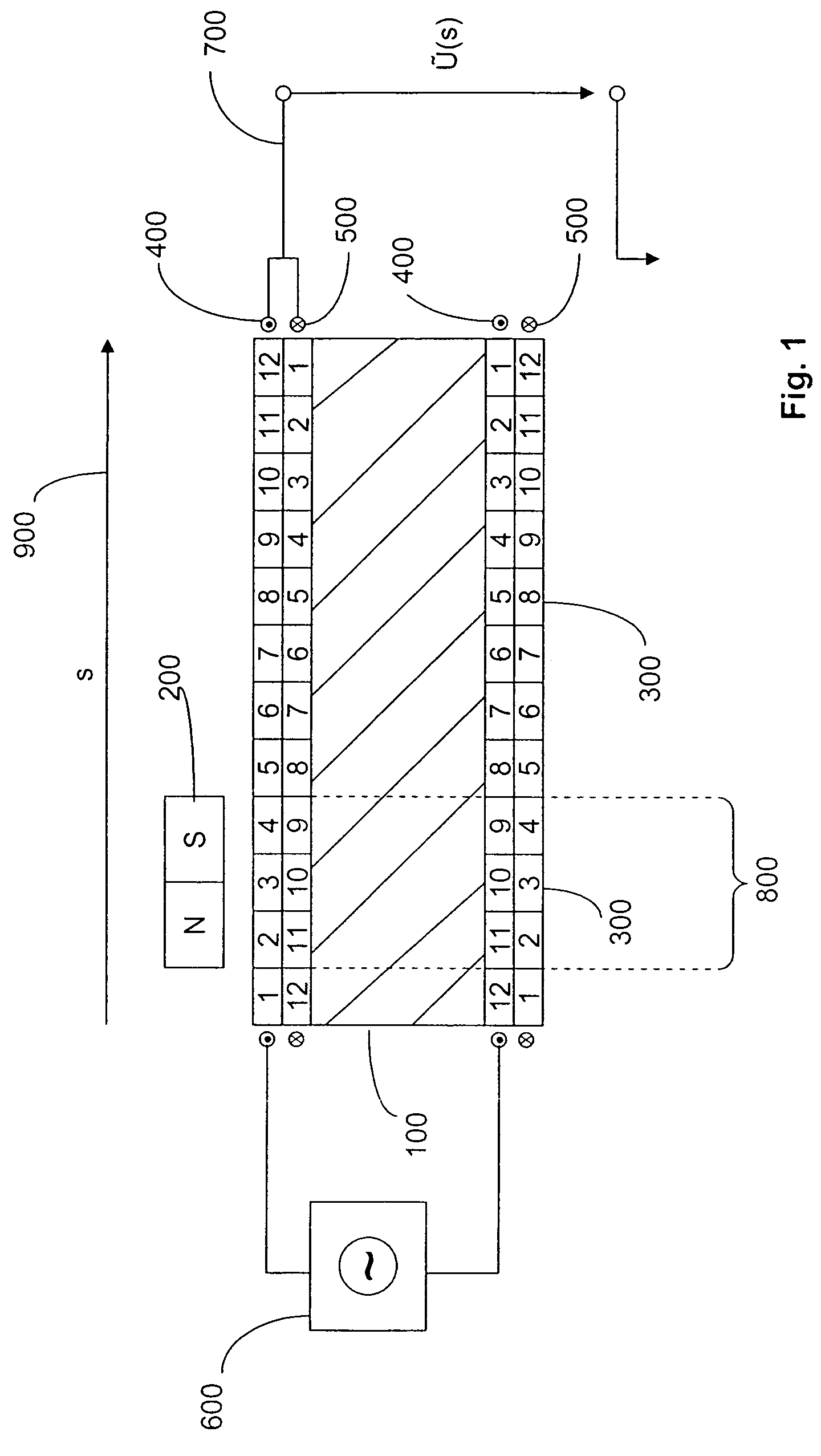Inductive magnetic position sensor
a position sensor and magnetic field technology, applied in the field of magnetic field, can solve the problems of inability to meet the needs of many lower-cost applications, large electrical current consumption of magnetostrictive sensors, and expensive devices, etc., and achieve the effects of small size, large measurement area, and low cos
- Summary
- Abstract
- Description
- Claims
- Application Information
AI Technical Summary
Benefits of technology
Problems solved by technology
Method used
Image
Examples
Embodiment Construction
[0018]First and second winding layers 400, 500 surround a ferromagnetic core 100. The winding layers are divided into segments 300 of equal widths. The winding density within any given segment 300 is constant, and the winding density changes linearly from segment to segment over the path length 900. In the inner winding width 500, the respective winding densities decrease over the path length 900 as shown in the drawing by segments 12:11:10 . . . :1.
[0019]In the outer winding layer 400, the respective winding densities increase over the path length 900 as shown in the drawing by segments 1:2:3:4 . . . :12.
[0020]The length of segment 300 preferably is approximately one-third of the longitudinal dimension of magnet 200 that serves as a position indicator.
[0021]The outer winding 400 is wound about ferromagnetic core 100 in the opposite direction to the windings of inner winding layer 500.
[0022]At one end of the sensor, the two windings 400, 500 are electrically connected in series. Bot...
PUM
| Property | Measurement | Unit |
|---|---|---|
| length | aaaaa | aaaaa |
| length | aaaaa | aaaaa |
| winding densities | aaaaa | aaaaa |
Abstract
Description
Claims
Application Information
 Login to View More
Login to View More - R&D
- Intellectual Property
- Life Sciences
- Materials
- Tech Scout
- Unparalleled Data Quality
- Higher Quality Content
- 60% Fewer Hallucinations
Browse by: Latest US Patents, China's latest patents, Technical Efficacy Thesaurus, Application Domain, Technology Topic, Popular Technical Reports.
© 2025 PatSnap. All rights reserved.Legal|Privacy policy|Modern Slavery Act Transparency Statement|Sitemap|About US| Contact US: help@patsnap.com


